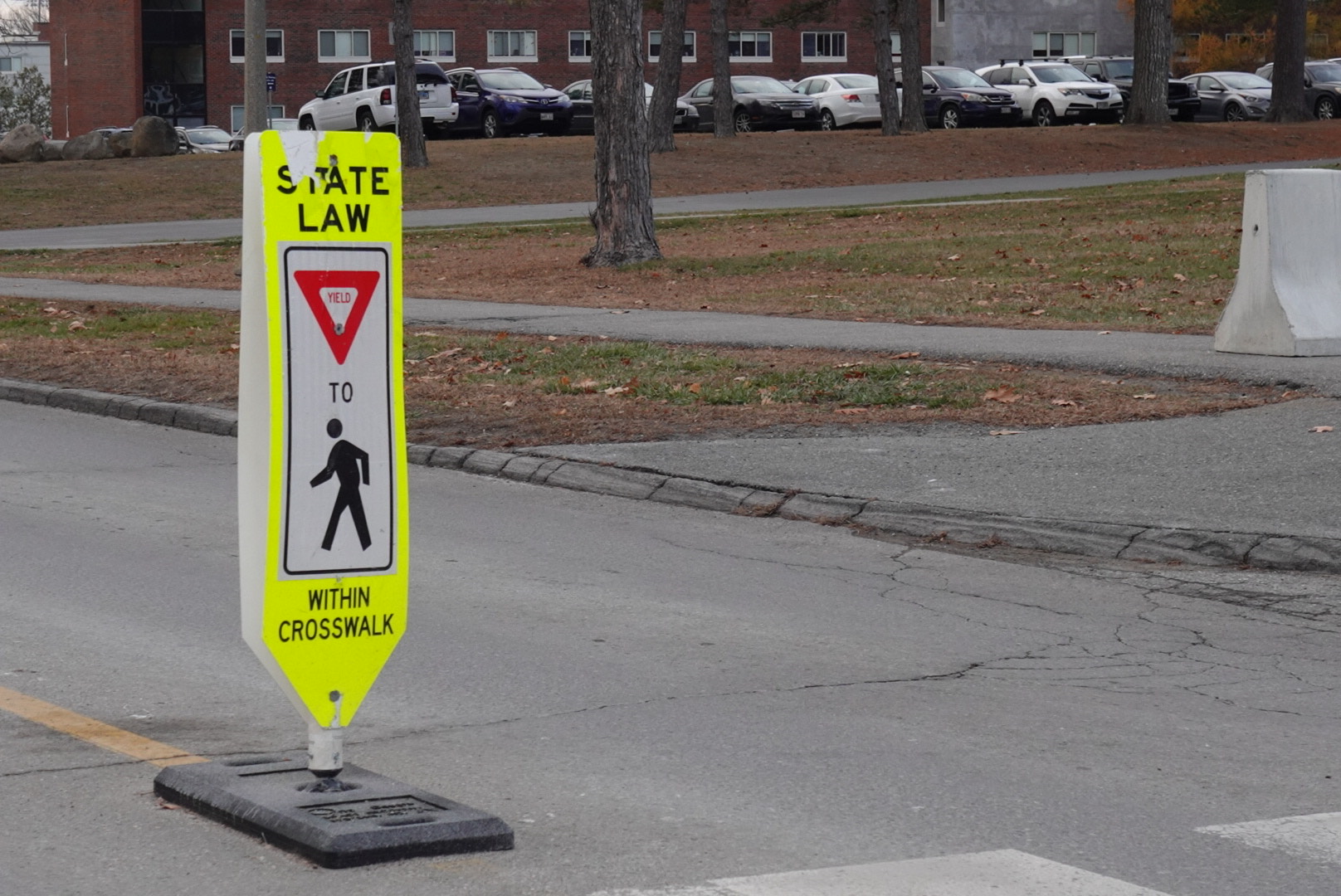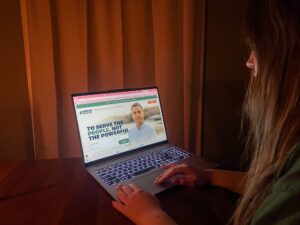It is dark by 4 p.m. in Maine, with the campus bundling up in preparation for the cold hitting Orono. Students, trying to walk to their dormitories or cars after class, are doing so on often poorly lit paths littered with potholes and hazards. First-year mechanical engineering major Violet Born, recently off of crutches, has taken into account spaces on campus that are difficult to navigate.
“If you’re a freshman who is not from Maine, I would definitely say that you probably won’t feel 100% safe walking those stretches at night, especially because there could be a mix of wild animals or drunk people coming from frats, or just general safety hazards.”
These safety hazards range from lighting issues to potholes to unsafe driving on winding roads. A key point of focus amongst the University of Maine Student Government (UMSG) and the Orono community has been cars speeding on campus. With multiple accidents this semester alone, Born reports that “cars go flying through those dimly lit parts of campus.”
To address these concerns, UMSG has been coordinating the installation of speed humps. While purchased earlier this semester, they have to wait to be put in until the spring, given that snowplows cannot operate with them on the roads. In the meantime, yellow crosswalk signs have been put on campus roads to help minimize speeding.
UMSG Services Chair Ryan St. Lawrence told Maine Campus, “We’re trying to get speed humps up on Long Road and by Sebago [road], just because of how many car accidents there have been.”
St. Lawrence has been taking the lead on a new community initiative, Night Walks. This event takes groups of volunteers through the walkways on campus to identify and report any hazards. This first event took place last week, though St. Lawrence hopes it will be a semesterly tradition.
“We could go out and try to get as many accessibility concerns or just general concerns, such as potholes, broken lights. I’m looking at one right now, which is just so coincidentally perfect timing,” said St. Lawrence, standing at the bottom of Fogler Library stairs. Though the weather set in frigid temperatures, more than 20 volunteers came to scope for hazards.
Reporting over 150 hazards, with one group finding 76 separate issues, most problems were said to be broken lines with considerable amounts of faded parking lines in the Hilltop Lot. Accessibility on Campus members showed up for this event, reportedly hopeful for these Night Walks to become more common. With the current data, St. Lawrence plans to use the coordinates gathered to report to be fixed.
These efforts build on what UMSG Vice President Cynthia Shlemerdine did last spring, where she walked each path on campus scoping for lighting concerns. With the map she made from this survey, she was able to report broken fixtures. Now, a team of students are able to work from this and report any hazards they may find.
She attributed the paths around Hotel Ursa, Penobscot Hall and the President’s House as being poorly lit. Additionally, walking to the Steamplant Lot has little visibility and mainly side paths, to which Born just remarked, “it’s just bad.”
With UMSG aware of these issues and pinpointing exact places with hazards, there are expectations among students that changes will be made.
Accessibility concerns are vast in the community, with some students more affected than others with infrastructure and lighting problems: the disabled community. Particularly after the Student Accessibility Services (SAS) email mishap earlier this semester, the backlash has not been quiet. Beyond the clamber, there has arisen new advancements for the disabled community at UMaine, starting with the new organization, Accessibility on Campus.
Being recognized as a Community Association Board member by the UMaine Student Government (UMSG) earlier this month, senate will now have an accessibility representative to relay concerns of disabled students. Third-year Nico Faragodumsch, the outreach coordinator for Accessibility on Campus, spoke about rebuilding trust between the UMaine administration and impaired students after the email mishap of SAS. The representative board Faragodumsch serves on will be a way to strengthen communication between these parties.
“We created Accessibility on Campus so that we could have an organization that’s an arm of UMSG that can communicate the concerns of the disabled students and other students, who might not identify as disabled, who need accommodations to the administration and other UMSG employees, so that there can be a bigger conversation and we can create changes in infrastructure.”
Faragodumsch hopes for the process of submitting accommodation requests to SAS to be as smooth as possible, with petitions addressed efficiently and effectively. He indicated that addressing hazards and personal accessibility concerns will be paramount to general student comfort. The infrastructure of the university, both in the coherence of SAS and the built environment that houses students, may be vital to going forward.








